This is a picture of what ancient people thought the constellation Leo
looked like.
Click on image for full size
Image: (c)1995 Visual Language, All Rights Reserved
Constellations
Constellations are formed of bright
stars which appear close to each other on the sky, but are really far apart in space. The shapes you see all depend on your point of view. Many societies saw patterns among the stars with
gods and goddesses or
stories from their culture.
Most of the constellations with which we are familiar come from
ancient Greece. But other civilizations created their
own patterns in the sky based on stories and people that were
important to them.
Many peoples noticed that the
planets, the
moon, and
comets moved through the sky in a
different way than the stars.
Because of the rotation of the
Earth and its orbit around the
Sun, we divide the constellations into two groups. Some
constellations never rise nor set, and they are called
circumpolar. All the rest are divided into seasonal
constellations. Which constellations will be circumpolar and which
seasonal depends on your latitude.
You might also be interested in:

How did life evolve on Earth? The answer to this question can help us understand our past and prepare for our future. Although evolution provides credible and reliable answers, polls show that many people turn away from science, seeking other explanations with which they are more comfortable.
...more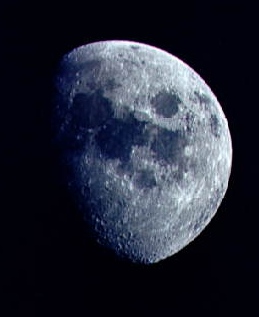
The Earth's one natural satellite, the Moon, is more than one quarter the size of Earth itself (3,474 km diameter). Because of its smaller size, the Moon's gravity is one-sixth of the Earth's gravity,
...more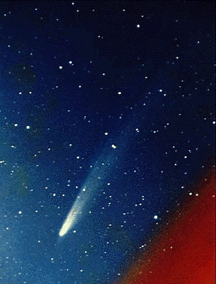
Not long ago, many people thought that comets were a sign that something bad was about to happen to them. People didn't understand how objects in the sky moved, so the sight of a comet must have been
...more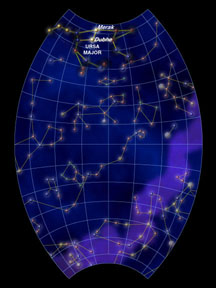
Something new and exciting is happening at Windows to the Universe! Windows scientists say they discovered twelve new stars, including one that is the second brightest in the night sky! They decided to
...more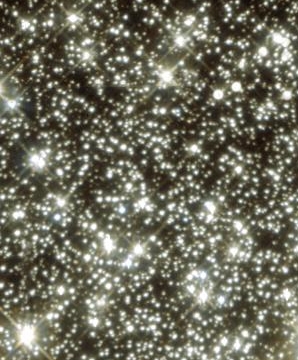
The pinpoints of light that you see in the night sky are stars. Your ability to see the stars depends on how bright they are (their "absolute magnitude"), as well as how close they are to Earth. Stars
...more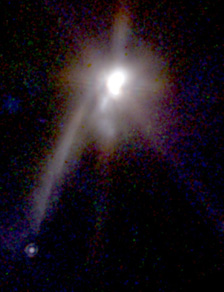
Possible planet? Protoplanet? Possibly. Scientists searching through Hubble images of stars in the constellation Taurus may have found what could be the first image of a planet outside our solar system.Susan
...more
The ancient Greeks saw the figure of the Greek myth Orion in the nighttime sky. There are several different stories about the birth of Orion. According to one version of the myth, Orion was the son of
...more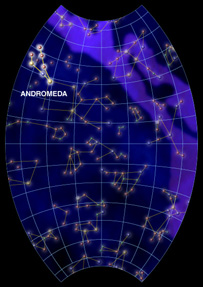
Andromeda is a "V" shaped constellation best viewed in the fall if you live in the Northern Hemisphere. Andromeda lies close to the north pole, so only a few in the Southern Hemisphere can see this strangely
...more















